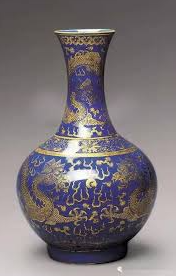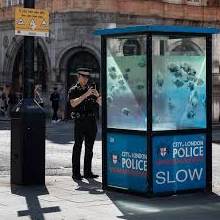
A rare 18th-century piece, originally bought for a few hundred pounds, sparks fierce bidding war.
An extraordinarily rare Chinese vase from the 18th century, once bought by an English surgeon for only a few hundred pounds in the 1980s, has been sold for nearly £1.5 million at auction. The 60cm tall vase, which features blue-glazed decoration with silver and gilt, is adorned with symbols of cranes and bats and was originally crafted for the court of the Qianlong Emperor.
The piece, created in the 1700s, had been passed down to the surgeon’s son, who placed it in his kitchen, unaware of its true worth. It wasn’t until an antiques specialist visited the home that the vase’s significant value was recognised. Dreweatts Auctioneers, based in Berkshire, had initially estimated the vase’s value at around £100,000-£150,000, but the piece fetched an impressive £1.2 million at auction, with the buyer’s premium bringing the total closer to £1.5 million.
The vase was sold to an international buyer over the phone, following intense bidding from across China, Hong Kong, the US, and the UK.
Mark Newstead from Dreweatts expressed excitement over the result, stating, “This outstanding outcome reflects the immense global interest the piece generated, with particularly competitive bidding.” The vase was hailed as a masterpiece of craftsmanship from the Qianlong era, showcasing intricate enamelling techniques that were designed to appeal to the emperor’s refined taste for exotic designs. To achieve the various colours, the vase required at least three kiln firings, including a high-temperature firing at over 1200℃ for the iconic cobalt blue.
The cobalt blue glaze, often referred to as “sacrificial blue,” is associated with ritual vessels used in sacrifices at the Imperial Altar of Heaven. The auction house noted that it is rare to see vases featuring both gilding and silver, especially in combination with this particular glaze, as the medium is notoriously difficult to manage. Furthermore, no other known porcelain piece decorated with the same imagery in gold and silver has been documented.
The vase also bears a six-character mark on its base, a distinctive feature of the Qianlong period (1736-1795), further confirming its historical authenticity.












